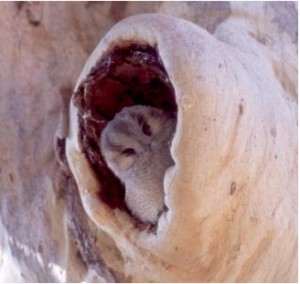Talk by Dr. Philip Gibbons, the Australian National University
When: Thursday 18 September 2008, 7.30pm
Where: Blue Gum School Friends’ Lounge, Hackett shops
Most of the hollow-bearing trees on Mount Majura were standing when Cook sailed into Botany Bay. Over 300 Australian species of birds, mammals, reptiles and frogs rely on tree hollows.
Why do tree hollows take so long to form? What animals use them? And why are 100 hollow-dependant species listed as threatened in Australia?
Dr. Philip Gibbons lives in the shadows of Mount Majura and is Australia’s expert on tree hollows.
He will tell a story of love, loss and hope.
The love between Canberra’s old trees and its fauna.
The loss of old trees and their hollows in Canberra’s streets, parks and surrounding farms drawing on data collected locally.
And the hope that we can reverse this decline by erecting nest boxes, learning to live with old trees and recruiting the next generation of old trees.
Enquiries: ph 6247 7515 or e-mail admin@majura.org
 The talk is part of a free lecture series
The talk is part of a free lecture series
Hilltop to Backfence – Celebrating 5 years of ParkCare on Mount Majura
The lectures cover a range of local environmental issues and explore biodiversity on our doorstep.
Download the Hilltop to Backfence program (pdf file).
Hollow Breeding Birds of Mount Majura (list) The following list of hollow breeding birds of Mount Majura is based on the “Bird Species List for Mount Majura” of the Canberra Ornithologists Group (COG). The common English names are drawn from: Christidis, L. & Boles, W.E. (1994) The Taxonomy and Species of Birds of Australia and its Territories. Royal Australasian Ornithologists Union Monograph 2, RAOU, Melbourne. The species are listed in taxonomic order. Some species such as the Australian Wood Duck are optional hollow breeders (o); some hollow breeders are introduced (i); some species such as the Swift Parrot are not breeding in the area.
Australian Wood Duck (o)
Pacific Black Duck (o)
Peregrine Falcon (o)
Nankeen Kestrel (o)
Glossy Black-Cockatoo
Yellow-tailed Black-Cockatoo
Gang-gang Cockatoo
Galah
Sulphur-crested Cockatoo
Little Lorikeet
Australian King-Parrot
Crimson Rosella
Eastern Rosella
Red-rumped Parrot
Swift Parrot
Southern Boobook
Laughing Kookaburra
Sacred Kingfisher
Dollarbird
White-throated Treecreeper
Striated Pardalote
Grey Shrike-thrush (o)
House Sparrow (i)
Tree Martin
Common Starling (i)
Common Myna (i)


